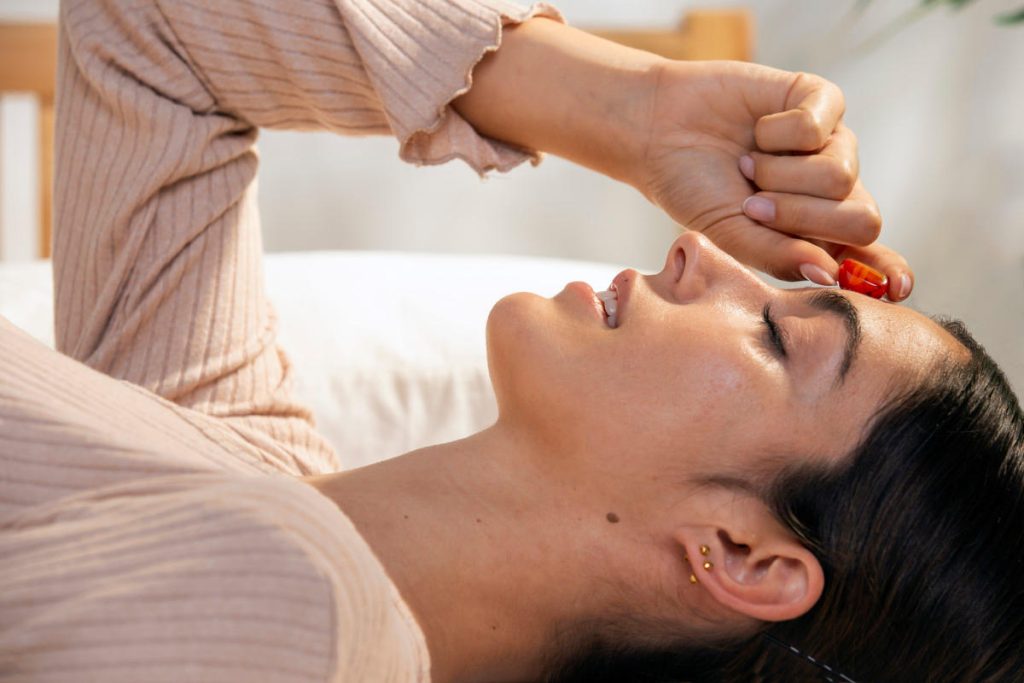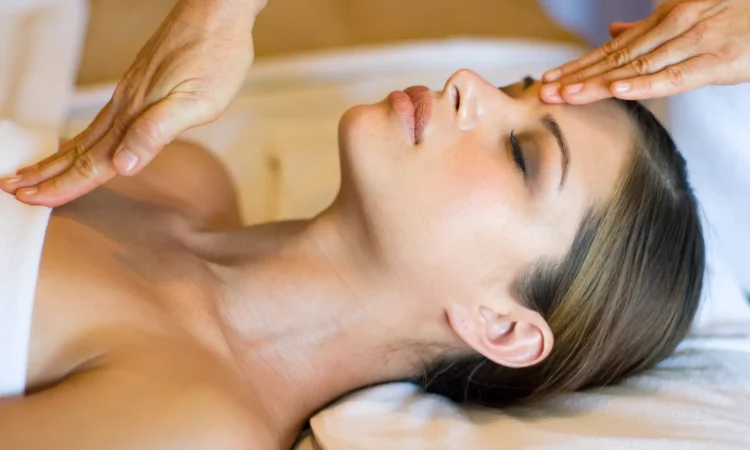Introduction: The Return of Ancient Wisdom
In a time when science and technology dominate healthcare conversations, the renewed interest in crystal healing may seem unexpected. Yet, across cultures and continents, more individuals are turning to energy-based therapies in search of balance, stress relief, and spiritual alignment. Crystal healing, a practice rooted in ancient civilizations such as Egypt, Greece, India, and China, is once again capturing global attention. Its resurgence is not merely a nostalgic nod to the past but a contemporary expression of a broader shift—one that embraces integrative, holistic approaches to well-being. Today’s crystal healing combines traditional metaphysical beliefs with modern wellness philosophies, positioning itself within a growing movement that views health not only as the absence of disease but as a dynamic equilibrium of body, mind, and spirit.
A Historical Overview of Crystal Therapy
Long before modern medicine, ancient societies revered crystals as sacred tools for protection, vitality, and emotional clarity. In Ancient Egypt, lapis lazuli and turquoise were used in amulets and burial rites to invoke divine protection. Traditional Chinese medicine employed jade for its purifying and longevity-promoting properties, while Indian Ayurvedic traditions associated different gemstones with the body’s energy centers, or chakras. These cultures believed that crystals could channel, store, and balance energies—a perspective that has transcended time. The idea that stones carry energetic vibrations and healing potential reemerged in the New Age movement of the 1970s, and has since evolved into a structured modality practiced by wellness professionals and self-healers alike.
Understanding the Energetics: How Crystal Healing Works
At the core of crystal healing is the belief that everything in the universe—including the human body—is composed of energy. Each crystal is said to vibrate at a specific frequency that interacts with the body’s energy field, or biofield, to promote harmony. According to practitioners, imbalances or blockages in this field can manifest as emotional distress, mental fog, or physical ailments. Placing crystals on or near the body, particularly on chakra points, is thought to restore energetic balance. Clear quartz, for example, is often used to amplify energy, while amethyst is believed to promote calm and spiritual insight. The practice may involve crystal layouts, meditation with stones, elixirs, or wearing crystals as jewelry to maintain energetic alignment throughout the day.
Crystals and Chakras: Aligning the Energy Centers
A central principle in crystal healing involves chakra alignment. There are seven main chakras in the body, each corresponding to specific physiological and emotional functions. Crystals are selected based on their vibrational frequency and color correspondence to each chakra. For example, red jasper is commonly used for the root chakra (associated with stability and security), while rose quartz is favored for the heart chakra (emotional balance and love). Practitioners place these stones directly on the chakra points during healing sessions to clear blockages and restore flow. This approach draws on both Eastern philosophical systems and Western metaphysical traditions, offering a bridge between body awareness and spiritual healing. Even those unfamiliar with chakra theory often report feeling more grounded, energized, or emotionally open after such sessions.
Scientific Scrutiny and Skepticism
Despite its popularity, crystal healing remains controversial in scientific circles. Critics argue that the practice lacks empirical evidence and operates largely through the placebo effect. Indeed, randomized clinical trials demonstrating the efficacy of crystals are scarce, and mainstream medicine does not recognize crystal therapy as a valid treatment for medical conditions. However, this skepticism does not necessarily diminish the value experienced by those who practice or receive crystal healing. Studies on placebo and belief systems show that intention and ritual can influence psychological and physiological responses. From a psychoneuroimmunological perspective, the act of setting intentions and engaging in mindful rituals—both central to crystal therapy—may stimulate positive mental states that indirectly support health outcomes. In essence, whether or not crystals have intrinsic power, the context in which they are used can foster relaxation, stress reduction, and emotional processing.
The Role of Crystals in Modern Holistic Wellness
Today, crystal healing has expanded beyond esoteric circles into mainstream wellness. Crystals are featured in yoga studios, meditation spaces, spas, and luxury wellness resorts. Retailers sell curated “healing kits” for stress relief, self-love, focus, and protection. Social media influencers and celebrities endorse their favorite stones, while books and courses on crystal energy are widely available. This democratization of crystal healing reflects a growing appetite for self-care tools that feel personal, accessible, and spiritually nourishing. Rather than replacing conventional medicine, crystals are often used as complementary aids, helping individuals develop a deeper connection with themselves. For many, a crystal serves not just as an energetic object, but as a tangible reminder of intention, resilience, and inner alignment.

Psychological and Emotional Benefits
The therapeutic effects of crystal healing may be better understood through the lens of psychology. Rituals involving crystals create a structured space for reflection, mindfulness, and intention-setting—practices known to alleviate anxiety and depression. Holding a grounding stone like hematite during meditation can act as an anchor for attention, while gazing at a shimmering selenite wand may facilitate mental clarity. Crystals also function as symbolic objects; their colors, textures, and historical meanings evoke different emotional states. For example, carrying tiger’s eye might inspire confidence, while moonstone may encourage emotional introspection. These associations create powerful internal shifts that support emotional regulation, self-awareness, and mood enhancement.
Integrating Crystal Healing into Daily Life
Crystal healing need not be confined to formal sessions. Many individuals integrate crystals into their everyday routines in simple yet meaningful ways. Sleeping with an amethyst under the pillow to promote rest, placing black tourmaline near electronics to absorb negative energy, or wearing citrine jewelry to attract abundance are common practices. Mindful rituals, such as cleansing stones in moonlight or meditating with a specific crystal each morning, strengthen one’s connection to their inner world. These small acts encourage consistency in self-care and serve as daily touchpoints for introspection. In workplaces, some use crystals to create a calming atmosphere or reduce electromagnetic stress. In homes, they are arranged as decorative altars that inspire tranquility and aesthetic pleasure.
Cultural Sensitivity and Ethical Sourcing
As crystal healing becomes increasingly commercialized, questions of cultural appropriation and ethical sourcing have surfaced. Many crystals have sacred meanings in indigenous and spiritual traditions, and it is crucial to honor these origins respectfully. Moreover, the demand for healing stones has led to environmental degradation and exploitative labor practices in mining communities. Conscious consumers and practitioners are now emphasizing responsible sourcing—supporting transparent supply chains, buying from ethical vendors, and using fewer but more meaningful stones. Some wellness brands are integrating sustainability pledges and education into their offerings, encouraging users to see crystals not as disposable trends but as spiritual allies to be treated with reverence.
Training and Professionalization
With rising demand, the field of crystal healing has seen increased formalization. Certification programs now exist to train practitioners in crystal theory, chakra mapping, energetic protection, and client care. While regulation remains limited, these programs help set ethical and professional standards. A qualified crystal healer often combines multiple modalities—such as Reiki, aromatherapy, or sound healing—to provide integrative experiences tailored to individual needs. Clear communication, intuitive skill, and a grounded understanding of energy dynamics distinguish skilled practitioners. For those drawn to the field, education is not just about technique but also about developing sensitivity, ethics, and a deep respect for the healing journey.
A Holistic Future Rooted in Balance
The resurgence of crystal healing is more than a passing trend; it represents a larger cultural longing for harmony in an overstimulated, fragmented world. As the modern health paradigm shifts from treatment to prevention and from symptoms to root causes, energy-based therapies like crystal healing find their place. They invite individuals to slow down, tune in, and honor the invisible threads that connect the physical, emotional, and spiritual dimensions of life. Whether viewed through a scientific, symbolic, or spiritual lens, the practice fosters mindfulness, intentionality, and self-empowerment. In doing so, it contributes to a holistic vision of health that values both evidence and experience, data and intuition, medicine and meaning.
Conclusion: Crystals as Catalysts for Inner Harmony
Crystal healing may not promise instant cures, but it offers something equally valuable: a framework for reconnection—with oneself, with nature, and with the energies that shape our internal and external worlds. In their stillness and beauty, crystals remind us of the enduring wisdom that healing begins within. As more individuals explore this vibrational path, they discover not just the energy of stones, but their own capacity for transformation. The resurgence of crystal therapy is ultimately a call to remember that healing is not just about fixing what’s broken—it’s about awakening what’s whole.











































